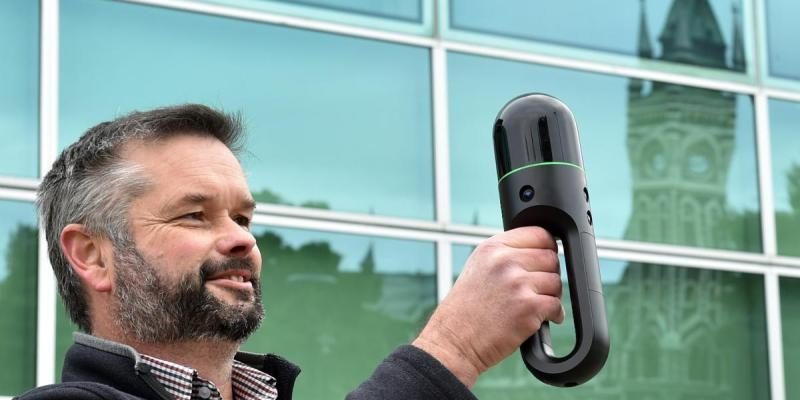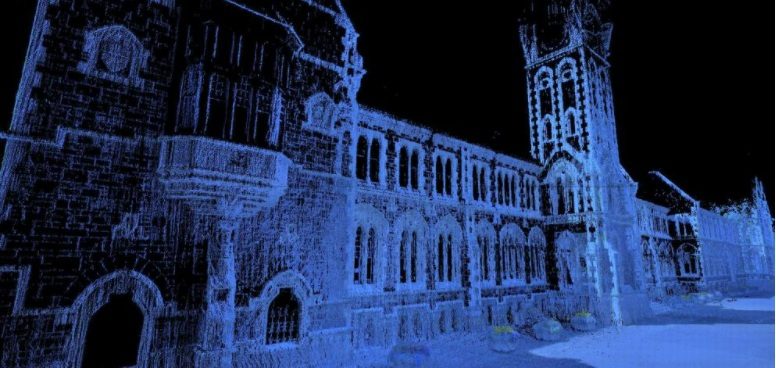
The University of Otago have recently acquired the Leica BKL2GO handheld scanner. This scanner – believed to be one of Dunedin’s first – can record the exact size of each building and the spaces inside it, along with the location of assets that need maintaining or testing regularly, including heat pumps, lifts, pest traps, fire extinguishers, emergency lighting, and water valves.
The BLK2GO is producing virtual 3D images of University buildings to within +/- 6mm while simultaneously taking 270-degree photos, to create a treasure trove of valuable information, Building Information and Compliance Manager Rob Wilks says.
On the scans and photos, each asset can be geo-tagged (to pinpoint its geographical location) and relevant information added, including the type of ventilation unit in the images, its age, the size of its filters, and when those filters need to be replaced.
When loaded into University software, the information can show the location of a specific component in each identical asset, the location of those components in every building University-wide, and when maintenance needs to be done on those components.

The handheld Leica BLK2GO scanner – winner of the American Consumer Technology Association’s Best of Innovation award in 2020 – is a vital part of creating a single digital centralised asset management system, Mr Wilks says.
Every asset management system must be based on robust information and having the Leica BLK2GO scanner radically increases the accuracy and detail of information about the University’s 800-plus buildings that cover almost 222,000 square metres. Staff can check the scanners’ measurements against existing records – a recent scan of the Hercus Building revealed the lift shaft is half a metre away from the location shown on historical plans.
Speed & Efficiency
The scanner’s laser measures millions of points to produce a dimensionally accurate 3D digital model faster than staff can measure – instead of them working for several hours in the three-level 3180 gross square metre Property Services Division building in Albany Street, the new device could scan and photograph it in about 90 minutes, Mr Wilks estimates.
The scanner houses a 360° rotating LiDAR laser, three cameras, and an internal measurement unit similar to a gyroscope which lets the scanner ‘know’ its exact relative location wherever it is inside or outside a building.
Whats next?
Property Services Division Director Dean Macaulay says: “This acquisition of the Leica BLK2GO scanner is an integral part of Property Services’ maturity journey. With a large portfolio of deferred maintenance and a limited budget to address that in the short term, applications such as this, provide improved data for better decision making and planning in the short, medium and long term.”
The team identified the new system with help from Lennon Bedford at Global Survey and Richard Hemi at the School of Surveying and is looking forward to further collaboration with the school.
This story originally appeared on the University of Otago’s website (credit author – Gail Goodger), was published by the Otago Daily Times and is republished here with permission.
SHARE THIS ARTICLE


